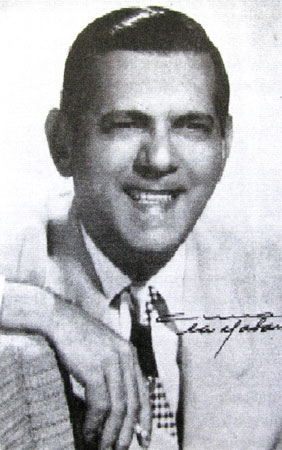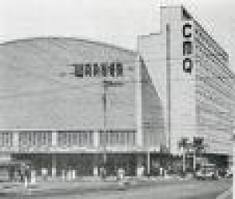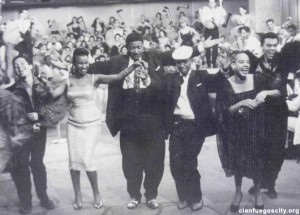In Cuban society there will always be a before and an after Strawberry and Chocolate.
This year marks two decades since the release of the iconic film inspired by a novel by Senel Paz, who led Tomas Gutierrez Alea (Titon) and Juan Carlos Tabio and Cubans faced homophobic prejudices.
http://youtu.be/LUqtSbVyJkQ
For the role elected a young actor, Jorge Perugorría, who had before it the enormous challenge of playing a gay intellectual doubly discriminated against because of their sexual preferences and critical thinking regarding Soviet orthodoxy.
Jorge Perugorría – “Pichi” for Cubans welcomed us into his home on the outskirts of Havana and told us that during the filming knew they were making a movie needed, but often wondered if he could hit theaters.
Why Strawberry and Chocolate had such a huge impact?
The impact of Strawberry and Chocolate is produced by the country’s need and Cuban film to address a subject that had hitherto been taboo. We knew we were making a movie that was necessary and our fuel.
Besides the subject matter, I think the result was a movie film endearing. I’ll never forget the premiere at the Film Festival 93, it was a magical projection, that I discovered how far art could connect with the viewer.
And then when we presented the film in Europe, U.S., Japan, and the people were amazed that we could do it in Cuba. Until then we had been perceived as a block, like the Koreans or the worst phase of Stalinism.
The film broke the mold and proved that Cuba was full of contradictions, of people who thought differently, practiced different religions, and although they had their problems, these people existed and constituted a society full of nuances.
I also really wonder how they could make that movie.
The presentation of Strawberry and Chocolate
http://youtu.be/ZG74YJhSiH4
The presentation of Strawberry and Chocolate Film Festival of Havana in 1993 shocked the nation.
It was not easy, but it was crucial that the project was directed by Tomás Gutiérrez Alea, Cuban film master. The project was little and it becomes very difficult to censor after the publication of the novel by Senel and the screenplay award at the Film Festival in Havana.
However, during filming, when we played tough issues, we wondered in jest, do you think they put it in theaters?
Yes put it in theaters, but the TV took 20 years to issue it.
This shows that there is a divorce between the cultural politics of this country and the mass media. There are two policies, the artists where there is much more freedom and the filter that determines what goes to the TV, radio and the written press.
It’s amazing that has passed but the big question I ask is I who determined that the Cuban people were not prepared to see Strawberry and Chocolate and who decided that 20 years later he could assimilate?
What did it mean for you as an actor?
Much, I am of the generation of character and self incarnated Diego building enriched me as a person, I opened new horizons, gave me much because it was a character that had a tremendous cultural training was a learning process.
1993 Oscar Nominees
The directors of the films nominated for Best Foreign Film at the Oscars in 1993, including Ang Lee (right) and Strawberries and Chocolate-by-Juan Carlos Tabio and Tomas Alea Gutierred (seated).
Before my dream was to do theater, a Cuban film ever dreamed of working with Titon, Tabio or Sola but I had never crossed my mind to have an international and suddenly opened the doors of the European and Latin American cinema.
Problems caused you play the role of a gay?
After making Strawberry and Chocolate, Titon said jokingly “now let’s shoot for reivindicarte Guantanamera” because in this new movie gave me a paper hat, male and a female in each province.
I had no prejudice, came from the theater and there he is tolerant of people’s sexuality. But you live in a sexist society and the country still has bias on that topic and has changed little despite all the efforts made.
COMPLETE FILM (SUBTITLED)
Twenty years, then as you see Strawberry and Chocolate?
Unfortunately the film is still very much alive in ways you want them to be things of the past. This country is undergoing changes but still we continue to learn from Strawberry and Chocolate.
Yet as a society we have not reached that final hug Diego and David, that reconciliation respecting the differences between people who think differently but can coexist and even be friends.
Sources:FernandoRavsberg/BBCMundo/YouTube/InternetPhotos/www.thecubanhistory.com
“Strawberry and Chocolate”, the film that shocked but did not change the Cubans
The Cuban History, Arnoldo Varona, Editor
“FRESA Y CHOCOLATE”, LA PELICULA QUE IMPACTO PERO NO CAMBIO A LOS CUBANOS
En la sociedad cubana siempre habrá un antes y un después de Fresa y Chocolate.
Este año, se cumplen dos décadas desde el estreno de la icónica película inspirada en una novela de Senel Paz, que dirigieron Tomás Gutiérrez Alea (Titón) y Juan Carlos Tabío y que enfrentó a los cubanos a sus prejuicios homofóbicos.
Para el papel protagónico eligieron un joven actor, Jorge Perugorría, quien tuvo ante sí el enorme reto de interpretar a un intelectual gay doblemente discriminado, debido a sus preferencias sexuales y a su pensamiento crítico respecto de la ortodoxia soviética.
Jorge Perugorría -“Pichi” para los cubanos- nos recibió en su casa en las afueras de La Habana y nos confesó que durante la filmación sabían que estaban haciendo una película necesaria, pero muchas veces se preguntaban si lograría llegar a los cines.
¿Por qué Fresa y Chocolate tuvo esa enorme repercusión?
El impacto de Fresa y Chocolate se produce por la necesidad del país y del cine cubano de abordar un tema que hasta ese momento había sido tabú. Éramos conscientes de que estábamos haciendo una película necesaria y ese era nuestro combustible.
Aparte del tema tratado, yo creo que el resultado cinematográfico fue una película entrañable. Nunca se me olvidará el estreno en el Festival de Cine del 93, fue una proyección mágica, ahí yo descubrí hasta dónde el arte podía conectarse con el espectador.
Y después cuando presentábamos la película en Europa, en EE.UU., en Japón y la gente se asombraba de que hubiéramos podido hacerla en Cuba. Hasta ese momento nos habían percibido como un bloque, como los coreanos o como la peor etapa del estalinismo.
La película rompió esquemas y demostró que Cuba estaba llena de contradicciones, de personas que pensaban diferente, practicaban religiones distintas, y, aunque tuvieran sus problemas, esa gente existía y constituían una sociedad llena de matices.
Realmente yo también me pregunto cómo pudieron hacer esa película.
La presentación de Fresa y Chocolate
La presentación de Fresa y Chocolate en el festival de Cine de La Habana en 1993 conmocionó al país.
No fue fácil, pero fue determinante que el proyecto lo dirigiera Tomás Gutiérrez Alea, el maestro del cine cubano. El proyecto nace de a poco y se hace muy difícil de censurar después de la publicación de la novela de Senel y la premiación del guión en el Festival de Cine de La Habana.
De todas formas, durante la filmación, cuando tocábamos temas difíciles, nosotros preguntábamos en broma, ¿ustedes creen que pongan esto en los cines?
Sí la pusieron en los cines, pero la TV tardó 20 años en emitirla.
Esto demuestra que hay un divorcio entre la política cultural de este país y los medios de difusión masiva. Hay dos políticas, la de los artistas donde hay mucha más libertad y el filtro que determina lo que va a la TV, la radio o la prensa plana.
Es increíble que haya pasado pero la gran pregunta que me hago yo es ¿quién determinó que el pueblo cubano no estaba preparado para ver Fresa y Chocolate y quién decidió que 20 años después ya podía asimilarla?
¿Qué significó para ti como actor?
Mucho, yo soy de la generación del personaje que encarné y la propia construcción de Diego me enriqueció como persona, me abrió nuevos horizontes, me aportó mucho porque era un personaje que tenía una tremenda formación cultural, fue un proceso de aprendizaje.
Nominados al Oscar en 1993
PELICULA COMPLETA
http://youtu.be/gF47Mlrl0hw
Los directores de las películas nominadas a Mejor Película Extranjera en los Oscar de 1993, entre ellos Ang Lee (derecha) y -por Fresas y Chocolate- Juan Carlos Tabio and Tomas Gutierred Alea (sentados).
Antes mi sueño era hacer teatro, alguna película cubana, soñaba algún día trabajar con Titón, Tabío o Solá pero nunca se me había pasado por la cabeza tener una proyección internacional y de pronto se me abrieron las puertas del cine europeo y latinoamericano.
¿Te causó problemas hacer el papel de un gay?
Después de hacer Fresa y Chocolate, Titón me dijo en broma “ahora vamos a filmar Guantanamera para reivindicarte” porque en esa nueva película me dio un papel de camionero, machista y con una mujer en cada provincia.
Yo no tenía ningún prejuicio, venía del teatro y allí se es tolerante con la sexualidad de las personas. Pero uno vive en una sociedad machista y el país sigue teniendo prejuicios en ese tema y ha cambiado poco a pesar de todos los esfuerzos que se hacen.
¿Veinte años después como ves a Fresa y Chocolate?
Lamentablemente la película tiene todavía mucha vigencia en aspectos que uno quisiera que fueran cosas del pasado. Este país está inmerso en cambios pero todavía debemos seguir aprendiendo de Fresa y Chocolate.
Aún no hemos llegado como sociedad a ese abrazo final de Diego y David, esa reconciliación respetando las diferencias entre dos personas que piensan distinto pero que pueden convivir e incluso ser amigos.
Sources:FernandoRavsberg/BBCMundo/YouTube/InternetPhotos/www.thecubanhistory.com
“Strawberry and Chocolate”, the film that shocked but did not change the Cubans
The Cuban History, Arnoldo Varona, Editor











